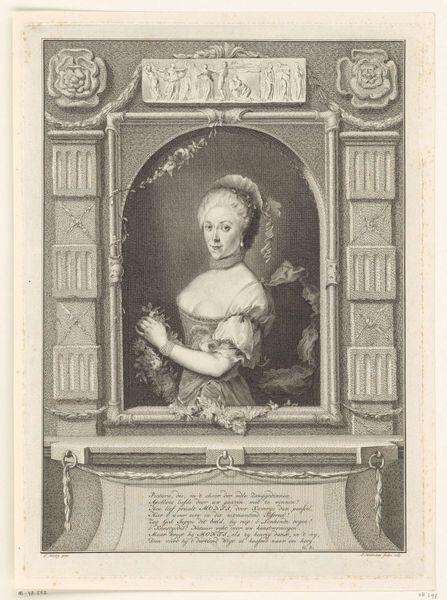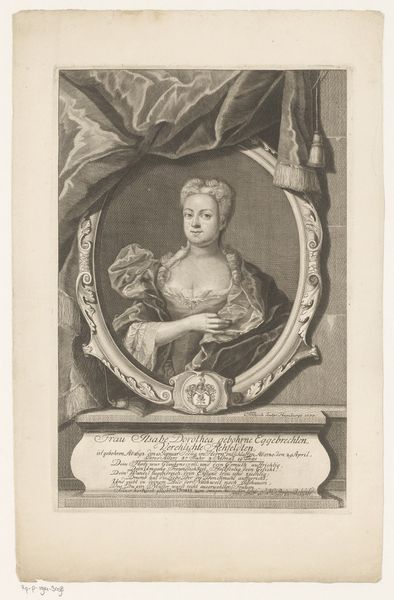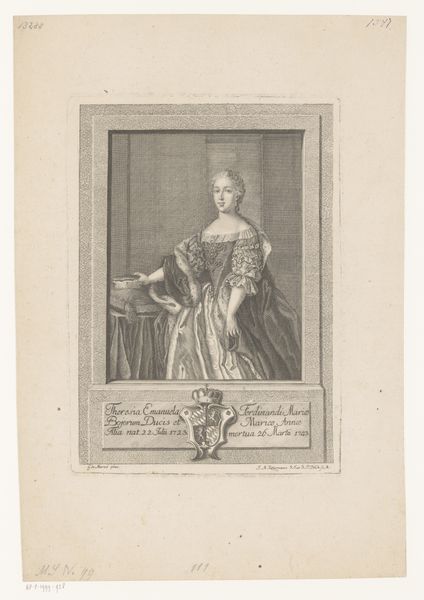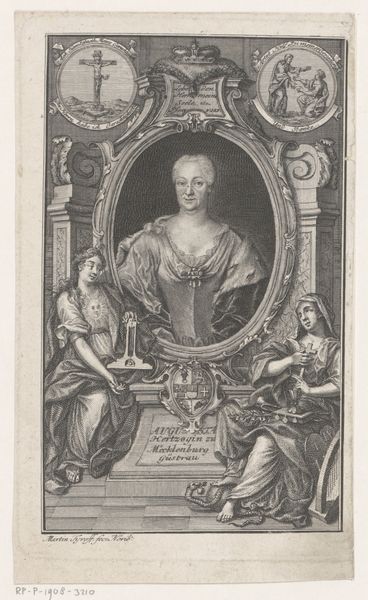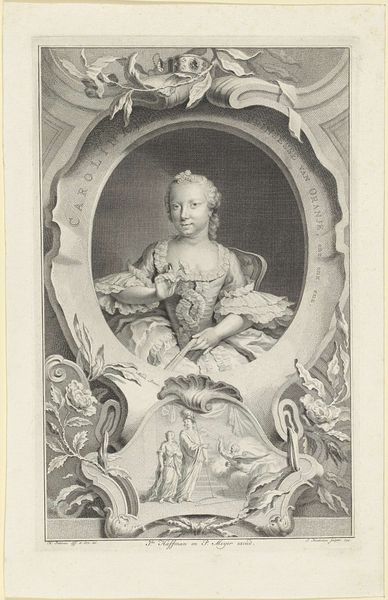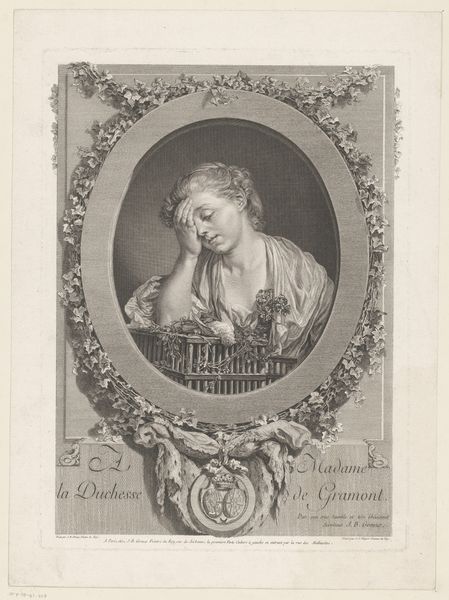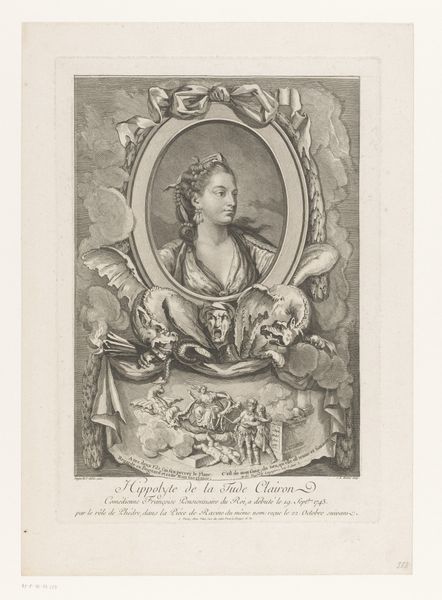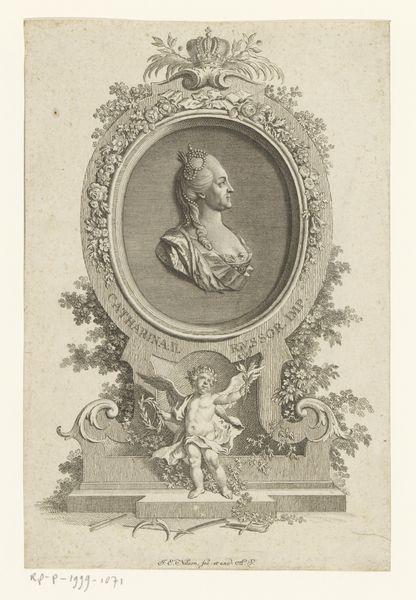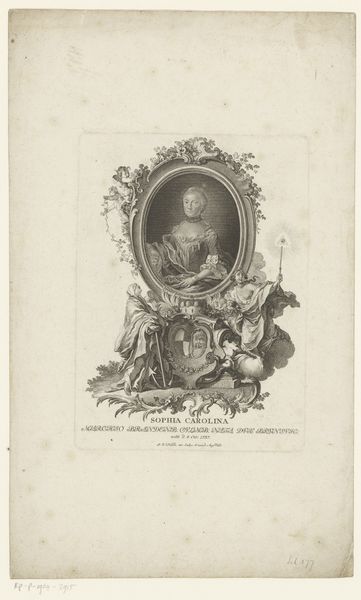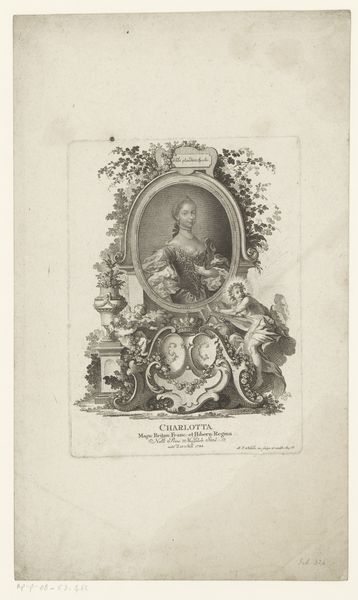
Dimensions: sheet: 17 5/16 x 12 1/2 in. (44 x 31.8 cm) image: 15 15/16 x 10 5/16 in. (40.5 x 26.2 cm)
Copyright: Public Domain
Editor: So, this is "L'Inspiration Favorable" by Jean-Honoré Fragonard, made between 1745 and 1806. It’s an engraving, and what strikes me is the way the floral arrangement both frames and almost overwhelms the central image. What compositional elements stand out to you? Curator: Note how Fragonard utilizes the oval frame not merely as a boundary but as an active component within the work, enriching the depicted scene. Consider, then, the arrangement of lines within that frame. Observe the dynamic interplay of curves and angles that create a balanced but certainly not symmetrical visual plane. Editor: Yes, I see it. The curves of the floral garland contrast with the sharper angles of the table and the woman’s desk. The whole thing has a delightful tension. Is this typical of the period? Curator: We might say the contrasting lines are emblematic of the Rococo tendency towards ornamentation and complexity; note, however, the delicacy of execution within the engraving itself. Consider, for example, the variation in line weight, lending depth to what is fundamentally a two-dimensional plane. How do these technical choices inform the overall aesthetic impact? Editor: I guess that adds to the sense of intimacy. It feels very personal, like a stolen glance. Now that you point it out, the varying lines give dimension and depth. Curator: Precisely. So, in isolating formal elements, are we not granted access to the broader intent of the work? It compels us to confront not just its face, but also its skeleton, if you will. Editor: I definitely see the engraving differently now, thinking about those lines and the shapes. Thanks! Curator: Indeed. A structural unpacking such as this offers, in turn, the chance for a more informed reflection on how art translates cultural context into concrete visuals.
Comments
No comments
Be the first to comment and join the conversation on the ultimate creative platform.
